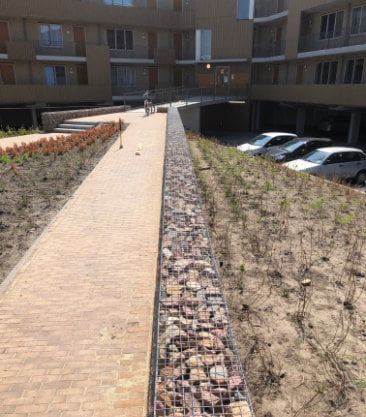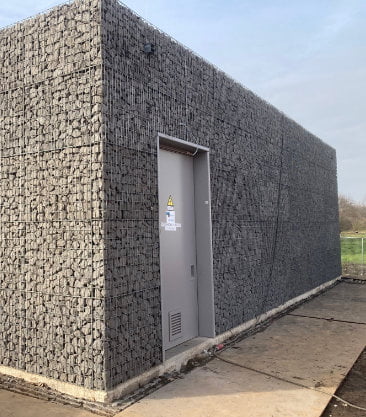
+31 (0)226 - 745992
+31 (0)226 - 745992
Downloads
Downloads

Sound Barriers and walls
Due to the heavy and solid nature of gabion walls, they not only have a solid appearance but also function as effective sound-absorbing structures. Their porous and structured character allows gabion walls to absorb sound waves effectively, and they also provide opportunities for the integration of vegetation such as climbing plants or sedum species. These properties make gabion walls well-suited for combination with traditional building materials such as glass and concrete. Additionally, it’s even possible to integrate an extra sound-absorbing core into the gabions.
In addition to their acoustic properties, gabion walls are also ideally suited as property boundaries, landscape elements, or garden walls. They not only add an aesthetic element to the environment but also contribute to sound control and provide space for green planting.


Application and Ecology
For these specific applications, welded gabions are commonly used. Welded gabions have a rectangular or square mesh opening and are typically made from ‘galfan’ wire, a steel wire with a pre-applied alloy consisting of 90% zinc (Zn) and 10% aluminum (Al). In most cases, the ground is sufficiently load-bearing for a foundation on steel, and a concrete working floor or a layer of crushed stone is sufficient. This construction method ensures durable and stable gabion walls suitable for various projects.
Gabion sound walls not only function as sound-absorbing structures but also serve as plantable “Ecowalls.” A small, rocky biotope is a rare ecosystem and can provide specialized flora and fauna with a habitat. This multifunctionality also demonstrates efficient use of space and is therefore a thoughtful approach to another scarce resource: space. In this way, gabion walls not only contribute to sound control but also offer a sustainable and green solution for various ecological needs.

Filling
Various materials are possible for filling gabion walls, such as broken natural stone, crushed rubble, rejected bricks, or other suitable materials. Almost anything is possible as long as the filling is frost-resistant. It is also essential that the gradation of the filling matches the chosen mesh opening to prevent the filling from falling out. Alternatively, gabion walls can be filled with soil, with the inner side covered with a soil-retaining cloth or coir fibers.
For optimal soundproofing, sound-reducing measures are applied to these constructions. This includes an inner core with insulating glass wool, a plywood sheet, or even a core of earth. This approach ensures effective sound absorption and offers flexibility in the design of the gabion wall construction.

